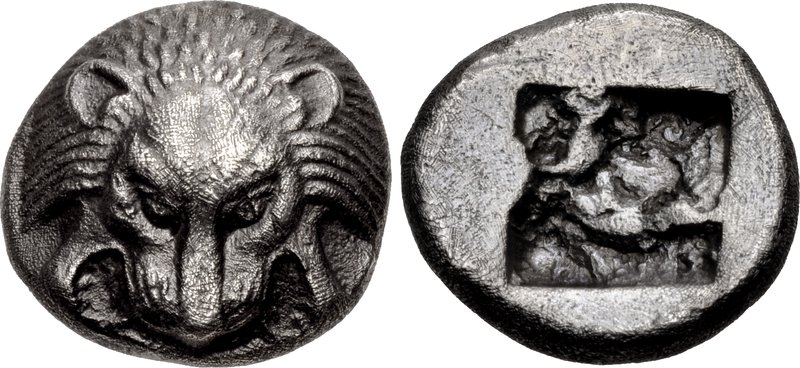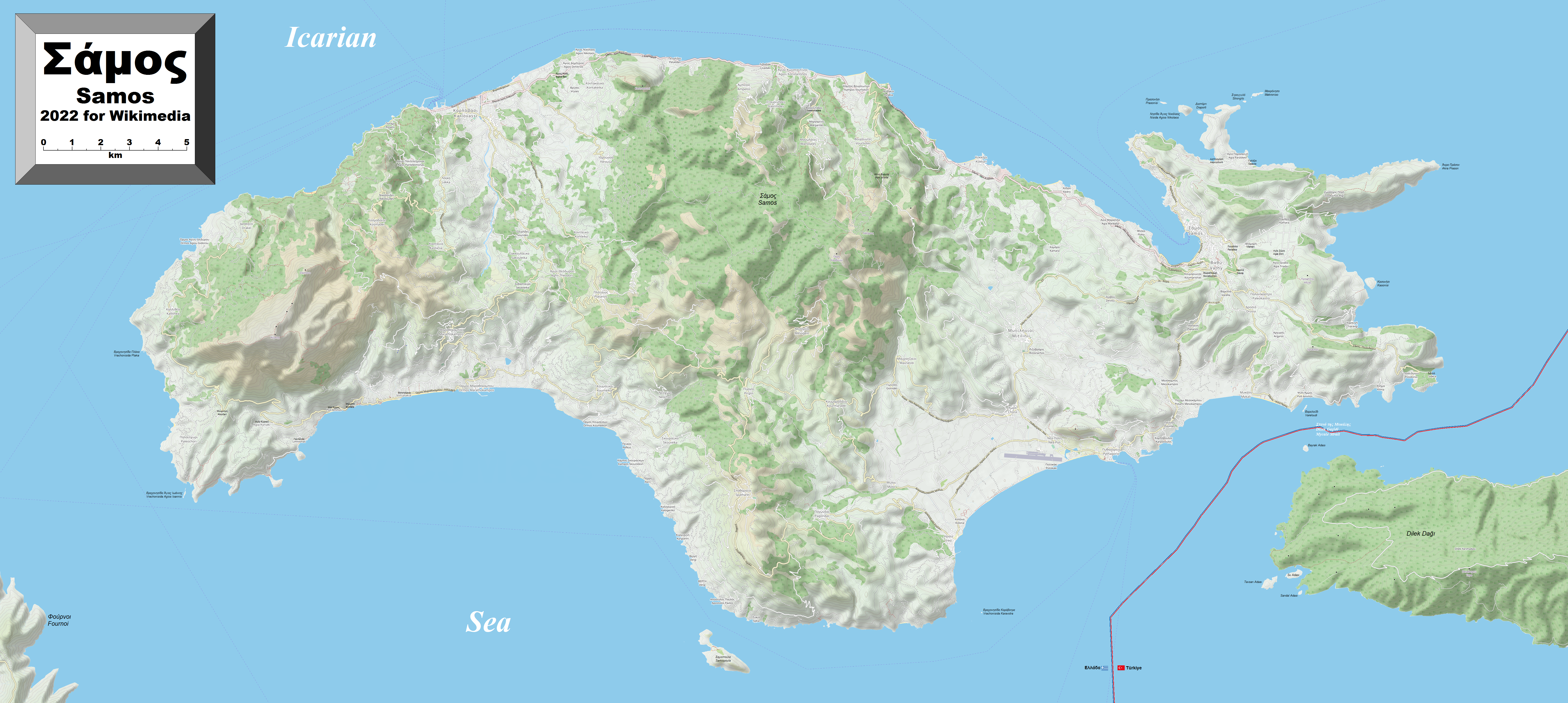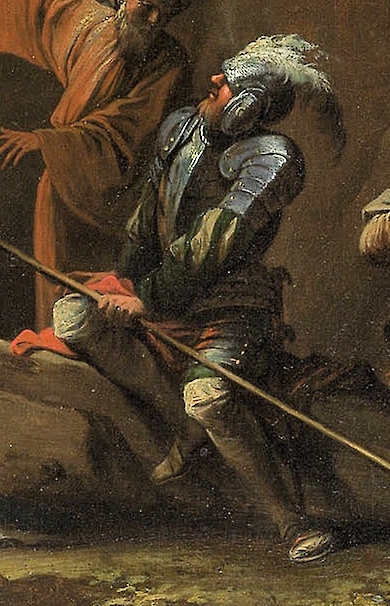|
Syloson
Syloson ( grc-gre, Συλοσών, ''gen''.: Συλοσῶνος) governed Samos as a vassal ruler on behalf of the Achaemenid Persian Empire. He was appointed by king Darius I and was the brother of Polycrates of Samos. When Polycrates became tyrant of the island he exiled Syloson. Syloson went to Egypt, where he stayed until a "flame-coloured mantle" he was selling brought him in contact with Darius I of Persia. At the time Darius I of Persia was a spearman in Cambyses II of Persia's army. Syloson saw how much Darius liked the mantle and gave it to him for free. When Darius rose to power Syloson went to visit him in Susa Susa ( ; Middle elx, 𒀸𒋗𒊺𒂗, translit=Šušen; Middle and Neo- elx, 𒋢𒋢𒌦, translit=Šušun; Neo-Elamite and Achaemenid elx, 𒀸𒋗𒐼𒀭, translit=Šušán; Achaemenid elx, 𒀸𒋗𒐼, translit=Šušá; fa, شوش .... Darius offered him gold and silver for his kindness in the past with the mantle but Syloson refused and wa ... [...More Info...] [...Related Items...] OR: [Wikipedia] [Google] [Baidu] |
Polycrates
Polycrates (; grc-gre, Πολυκράτης), son of Aeaces, was the tyrant of Samos from the 540s BC to 522 BC. He had a reputation as both a fierce warrior and an enlightened tyrant. Sources The main source for Polycrates' life and activities is the historian Herodotus, who devotes a large section of book 3 of his ''Histories'' to the rise and fall of Polycrates (3.39-60, 3.120-126). His account was written in the third quarter of the 5th century BC, nearly a century after Polycrates' death, was based mostly on oral traditions and incorporates many folk-tale elements. Furthermore, Herodotus creatively shaped his account of Polycrates in order to make general moral points and to comment on the imperialism of the Athenian empire in his own day. Some poetry from Polycrates' time comments on him in passing and there is a smattering of references to Polycrates in other literary sources ranging in date from the 4th century BC to the Roman Imperial period. These sources preserve ... [...More Info...] [...Related Items...] OR: [Wikipedia] [Google] [Baidu] |
Aeaces (son Of Syloson)
Aeaces, son of Syloson ( grc, Αἰάκης Συλοσῶνος) was the ruler of Samos in the late sixth and early fifth centuries BC. He belonged to an established dynasty of Samian rulers - his father Syloson had been installed as ruler of Samos by the Persian king Darius I around 520 BC and his uncle Polycrates had reigned before that. Aeaces was deprived of his tyranny by Aristagoras, when the Ionians The Ionians (; el, Ἴωνες, ''Íōnes'', singular , ''Íōn'') were one of the four major tribes that the Greeks considered themselves to be divided into during the ancient period; the other three being the Dorians, Aeolians, and Achae ... revolted against Persian rule in 500 BC. He then fled to the Persians, and persuaded the Samians to abandon the other Ionians in the sea-fight between the Persians and Ionians. After this battle, in which the latter were defeated, he was restored to the tyranny of Samos by the Persians in 494 BC. Notes References * {{SmithDG ... [...More Info...] [...Related Items...] OR: [Wikipedia] [Google] [Baidu] |
Otanes
Otanes (Old Persian: ''Utāna'', grc-gre, Ὀτάνης) is a name given to several figures that appear in the ''Histories'' of Herodotus. One or more of these figures may be the same person. In the ''Histories'' Otanes, son of Pharnaspes He was regarded as a Persian nobleman, being among the few with highest ranks in the kingdom, who was also a political philosopher. ''Histories'' 3.68.1, 3.68.3, 3.69.6 has an Otanes as the son of the Achaemenid Pharnaspes, as the father of Phaidyme (or Phaedyma), who in turn is a wife of Cambyses II, and later a wife of the Gaumata alias Smerdis. Herodotus gives this Otanes a role in the overthrow of the false Smerdis, and ''this'' Otanes is therefore generally assumed to be identical to a known co-conspirator of Darius I, mentioned in Darius's own list of his helpers at overthrowing Gaumata (DB IV 83). The Behistun inscription has this Otanes as the son of Thukhra, in which case he could not have been the son of Pharnaspes, and so cannot ... [...More Info...] [...Related Items...] OR: [Wikipedia] [Google] [Baidu] |
Archaic Tyrants
Archaic is a period of time preceding a designated classical period, or something from an older period of time that is also not found or used currently: *List of archaeological periods **Archaic Sumerian language, spoken between 31st - 26th centuries BC in Mesopotamia (Classical Sumerian is from 26th - 23rd centuries BC). **Archaic Greece **Archaic period in the Americas **Early Dynastic Period of Egypt * Archaic Homo sapiens, people who lived about 300,000 to 30,000 B.P. (this is far earlier than the archaeological definition) *Archaism, speech or writing in a form that is no longer current * Archaic language, one that preserves features that are no longer present in other languages of the same language family *List of archaic musical instruments *Archaic Latin Old Latin, also known as Early Latin or Archaic Latin (Classical la, prīsca Latīnitās, lit=ancient Latinity), was the Latin language in the period before 75 BC, i.e. before the age of Classical Latin. It descen ... [...More Info...] [...Related Items...] OR: [Wikipedia] [Google] [Baidu] |
Ancient Samians
Ancient history is a time period from the beginning of writing and recorded human history to as far as late antiquity. The span of recorded history is roughly 5,000 years, beginning with the Sumerian cuneiform script. Ancient history covers all continents inhabited by humans in the period 3000 BCAD 500. The three-age system periodizes ancient history into the Stone Age, the Bronze Age, and the Iron Age, with recorded history generally considered to begin with the Bronze Age. The start and end of the three ages varies between world regions. In many regions the Bronze Age is generally considered to begin a few centuries prior to 3000 BC, while the end of the Iron Age varies from the early first millennium BC in some regions to the late first millennium AD in others. During the time period of ancient history, the world population was already exponentially increasing due to the Neolithic Revolution, which was in full progress. While in 10,000 BC, the world population stood a ... [...More Info...] [...Related Items...] OR: [Wikipedia] [Google] [Baidu] |
6th-century BC Greek People
The 6th century is the period from 501 through 600 in line with the Julian calendar. In the West, the century marks the end of Classical Antiquity and the beginning of the Middle Ages. The collapse of the Western Roman Empire late in the previous century left Europe fractured into many small Germanic kingdoms competing fiercely for land and wealth. From the upheaval the Franks rose to prominence and carved out a sizeable domain covering much of modern France and Germany. Meanwhile, the surviving Eastern Roman Empire began to expand under Emperor Justinian, who recaptured North Africa from the Vandals and attempted fully to recover Italy as well, in the hope of reinstating Roman control over the lands once ruled by the Western Roman Empire. In its second Golden Age, the Sassanid Empire reached the peak of its power under Khosrau I in the 6th century.Roberts, J: "History of the World.". Penguin, 1994. The classical Gupta Empire of Northern India, largely overrun by the Huna, ended ... [...More Info...] [...Related Items...] OR: [Wikipedia] [Google] [Baidu] |
Charilaos
Charilaos (Greek: Χαρίλαος, in latin letters also spelled ''Kharilaos'' and ''Harilaos'', stress on the second syllable) is a Greek language male given name. Bearers of the name include: * Charilaos Trikoupis (1832-1896) * Charilaos Vasilakos (1875-1964) * Charilaos Giannakas (19th-20th centuries) * Charilaos Tsantis (1909-1979) * Charilaos Mitrelias (-1988) * Charilaos Florakis (1914-2005) * Charilaos Stavrakis (1956-) * Charilaos Pappas (1983-) * Charilaos Bikas (1992-) See also * Charis (name) Charis ( grc-gre, Χάρις) is a given name derived from a Greek word meaning "grace, kindness, and life." In Greek mythology, a Charis is one of the Charites ( el, Χάριτες) or "Graces", goddesses of charm, beauty, nature, human creati ... Greek masculine given names ... [...More Info...] [...Related Items...] OR: [Wikipedia] [Google] [Baidu] |
ISLANDS Off IONIA, Samos
An island or isle is a piece of subcontinental land completely surrounded by water. Very small islands such as emergent land features on atolls can be called islets, skerries, cays or keys. An island in a river or a lake island may be called an eyot or ait, and a small island off the coast may be called a holm. Sedimentary islands in the Ganges Delta are called chars. A grouping of geographically or geologically related islands, such as the Philippines, is referred to as an archipelago. There are two main types of islands in the sea: continental islands and oceanic islands. There are also artificial islands (man-made islands). There are about 900,000 official islands in the world. This number consists of all the officially-reported islands of each country. The total number of islands in the world is unknown. There may be hundreds of thousands of tiny islands that are unknown and uncounted. The number of sea islands in the world is estimated to be more than 200,000. The ... [...More Info...] [...Related Items...] OR: [Wikipedia] [Google] [Baidu] |
Samos
Samos (, also ; el, Σάμος ) is a Greek island in the eastern Aegean Sea, south of Chios, north of Patmos and the Dodecanese, and off the coast of western Turkey, from which it is separated by the -wide Mycale Strait. It is also a separate regional unit of the North Aegean region. In ancient times, Samos was an especially rich and powerful city-state, particularly known for its vineyards and wine production. It is home to Pythagoreion and the Heraion of Samos, a UNESCO World Heritage Site that includes the Eupalinian aqueduct, a marvel of ancient engineering. Samos is the birthplace of the Greek philosopher and mathematician Pythagoras, after whom the Pythagorean theorem is named, the philosophers Melissus of Samos and Epicurus, and the astronomer Aristarchus of Samos, the first known individual to propose that the Earth revolves around the sun. Samian wine was well known in antiquity and is still produced on the island. The island was governed by the semi- ... [...More Info...] [...Related Items...] OR: [Wikipedia] [Google] [Baidu] |
Oroetus
Oroetus, or Oroetes ( Old Iranian: ''Arvita'', Ancient Greek: ''Ὀροίτης''), was a Persian Satrap of Lydia (c. 530-520 BC), during the reigns of Cyrus the Great, Cambyses and Darius the Great, succeeding Harpagus, and being followed by Bagaeus. He is described by Herodotus in the third book of his ''Histories'', where he achieved notoriety for the death of Polycrates, tyrant of Samos: Oroetus became the first satrap recorded as demonstrating insubordination towards the central power of Persia. When Cambyses (ruled 530-522 BC), who succeeded his father Cyrus, died, the Persian Empire was in chaos prior to Darius the Great (522-486 BC) finally securing control. Oroetus defied Darius' orders to assist him, whereupon the Achaemenid The Achaemenid Empire or Achaemenian Empire (; peo, 𐎧𐏁𐏂, , ), also called the First Persian Empire, was an ancient Iranian empire founded by Cyrus the Great in 550 BC. Based in Western Asia, it was contemporarily the larg ... [...More Info...] [...Related Items...] OR: [Wikipedia] [Google] [Baidu] |



_(14746859616).jpg)




